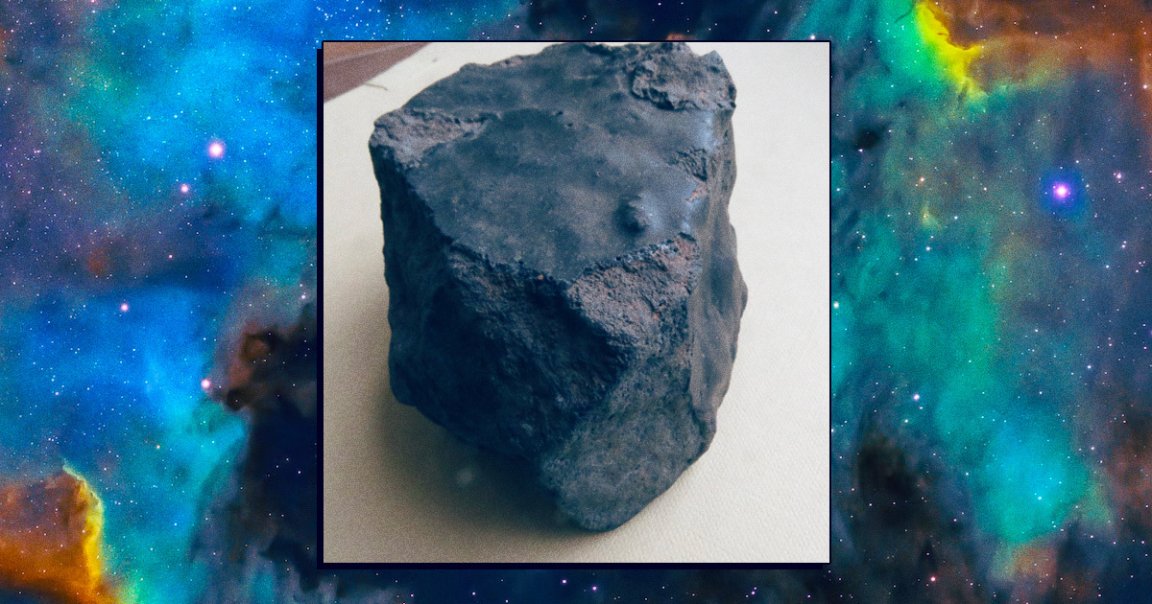
The Rock
A 1.4 pound piece of stone found in Morocco may be the first known “terrestrial meteorite,” which basically means a rock that made a roundtrip from Earth, into space, and back again — like a cosmic paddle ball, with gravity as the elastic string that eventually brings the rock back to Earth.
Due to certain unique features, scientists surmise that this cosmic boomerang was knocked into space about 10,000 years ago when an asteroid hit our planet with incredible speed, according to the scientists’ presentation held earlier this month in Lyon, France. After spending anywhere from 2,000 to tens of thousands of years in space, the theory goes, it eventually plunged back to our planet.
The research team is busy confirming if their hypothesis behind the rock’s origin is correct through various testing techniques, according to the presentation abstract.
But other scientists not involved in the study say it’s too soon to say for sure, and expressed caution over making an extraordinary claim.
“I think there is no doubt that this is a meteorite. It is just a matter of debate if it is really from Earth,” said Frank Brenker, a geology professor at Germany’s Goethe University in Frankfurt, told Space.com.
And it “is an interesting rock that would deserve more investigations to be conducted before making extraordinary claims,” Ludovic Ferrière, a rock curator at the Natural History Museum Vienna in Austria, told the site.
Substance Use
The meteorite drew notice from researchers because early tests showed it to be made of the same substance as volcanic rock on Earth, according to Space.com. Another unusual feature is that the rock has isotopes of elements that suggest it was exposed to cosmic rays. In addition, the rock has a “fusion crust,” a shiny surface that develops when a rock hurls through the Earth’s atmosphere before plummeting into the ground.
The meteorite captured scientists’ notice when retired French professor Albert Jambon from Sorbonne University in Paris bought the rock, labeled NWA 13188, in 2018 from a Moroccan dealer at a gem and mineral show, according to Space.com.
Jambon thinks nomadic tribal people in the Sahara probably picked up the rock sometime in the past — deepening the mystery of when the meteorite supposedly returned to Earth.
Jambon had the rock examined by Jérôme Gattaccecam, the scientist who gave the presentation in Lyon, Space.com reports. Gattaccecam is a researcher at the French National Centre for Scientific Research and Aix-Marseille University.
“I purchased this one just because it was odd,” Jambon told Space.com. “Nobody knows what this stone is really worth.”
More on meteorites: Expert Says Rock That Hit Woman Was Not a Meteorite